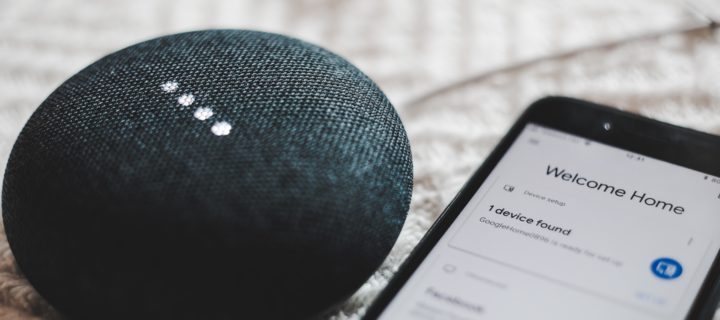The following contribution is from another author.
Energy conservation is the practice of using less energy in everyday activities and at home. Energy efficiency is the ability to use less energy by reducing the amount of energy used per task or activity. Everyone can live more efficiently and go green with a little effort and planning. Read on for a couple of innovative ways to improve your energy efficiency and live a greener life. If you feel like you are constantly running up the gas or electricity bill, it may be because you’re not using it wisely. For example, do you know how much electricity your fridge uses when it’s not fully stocked? Or exactly how much water your hot tub uses after you’ve been soaking in it all day? It’s time to get smart about your utilities and become an energy-efficient homeowner with these helpful tips:
Turn off the lights
If you can’t see it, why keep the lights on? That’s the first step towards more significant energy conservation. You’d be surprised at how many hours a day your family leaves lights on without even thinking about it. Switching off the lights when you’re not in the room can save you up to $100 per year on your electricity bill. Another way to implement this tip is to install motion sensor lights around your home. These lights will only turn on when someone is in the room. If you have young kids in the house, keep in mind that the lights may turn on when they’re playing since it activates when it senses movement.
Another strategy for reducing your reliance on artificial lighting is to introduce more natural light into your home. Adding a skylight can brighten a room and lessen the need to flip a switch during the day. Before committing to this upgrade, however, it might be to consider the skylight price as it can be affected by a wide range of factors.
If you have a few ceiling lights with dimmers, those can be even more energy efficient because the light intensity can be lowered when it’s not needed. Switch off the lights when you leave a room and never use light bulbs that are higher than your needs demand.
Install a programmable thermostat
A programmable thermostat can be set to automatically adjust the temperature in your home while you’re asleep, at work, or out of town on vacation. It will keep your utility bill lower while maintaining a comfortable indoor climate. Unlike the standard thermostat, which maintains a constant temperature, a programmable thermostat allows you to control how high (or low) the heat or A/C is running based on the time of day, the season, and how many people are home. Many programmable thermostats also have the capability to connect to your home WiFi for remote access. This way, you can adjust the temperature from anywhere. When you’re preparing for the winter months, it’s best to set up a programmable thermostat in the fall.
Diversify your energy portfolio
Energy portfolios are the mix of energy sources used to power and heat your home. For example, your energy portfolio might include electricity, natural gas, solar, wind, hydro, biomass, or geothermal. Your utility company usually covers this, but you can also invest in an energy-efficient home to reduce your reliance on utility companies. There are several ways to reduce your electricity use, including installing energy-saving appliances and light bulbs, unplugging appliances that are not in use, and installing solar panels. You can also try using a power bar or surge protector when you are charging multiple devices simultaneously. Power bars allow you to turn off the devices when they’re fully charged, thereby saving electricity and extending the life of the devices.
Ceiling fans and ventilation
During the summer, a large portion of your electricity bill is due to the use of air conditioning. Instead of cranking up the A/C, try opening a window and turning on a ceiling fan. If you have a ceiling fan installed in the living room or family room, you can set it to rotate counter-clockwise to pull air from the outside and circulate it in the room. This will create a gentle breeze and help you feel calmer, even though the temperature in the room remains the same. If you have the option of installing a ceiling fan in the bedroom, it may help your body regulate its internal temperature while you sleep. This could help you avoid having to run the air conditioning at night. Ceiling fans are a great way to reduce your energy costs throughout the year. Additionally, while a central air conditioning and heating systems might be convenient, you might want to look into cheaper systems like mini-split systems, which may only cost you $60 worth of electricity a month, leading to a much lower bill than one based on a central air consumption.
Smart home devices for automation
Consider investing in a few smart home devices to automate your home and save energy. You can use a smart plug to turn off appliances when they aren’t being used. A programmable thermostat can also regulate the cooling and heating in your home. You can set it to automatically switch to lower temperatures while you’re asleep or out of the house, and you can set it to turn up the heat before the family comes home from school or work. You can also use a smart lighting system to control the lights in your home from anywhere with your smartphone. These systems are designed to save energy by turning themselves off when no one is in the room. However, as with anything, if you don’t use it, you’ll lose it. These devices will only save you money if you actively use them to reduce your energy use.
Rainwater harvesting and greywater systems
In coastal regions where there is a lot of rainfall, harvesting the rainwater for irrigation is the most eco-friendly way to water your lawn and garden. Rainwater can also be used to flush toilets, but it is not safe to drink unless you treat it first. Some municipalities have strict regulations regarding the collection and use of rainwater. If you’re not sure if you can legally collect rainwater, check with your municipality. There are eco-friendly ways to water your garden without using municipal water. For example, a greywater system diverts water from the kitchen sink and washing machine and channels it to your garden. If you have a large front or backyard, consider retrofitting your home with a rainwater harvesting system. This will also save you from using municipal water as much when watering your garden. Check with your municipality to see if they offer any rebates or incentives to help offset the cost of these systems.
Conclusion
If you want to save money and live more sustainably, you can’t ignore your energy consumption. Unfortunately, energy usage is the largest source of greenhouse gas emissions in the United States. However, there are many simple ways to reduce your household energy usage and make your home more eco-friendly. These tips will help you reduce your energy usage and make your home more eco-friendly. Some of these tips may require an upfront investment, but they will save you money in the long run.

















Proper insulation is also important when you want to save on energy costs and become more eco-friendly. Properly insulating and weatherstripping your home can cut 10 to 20 percent off your annual energy consumption.